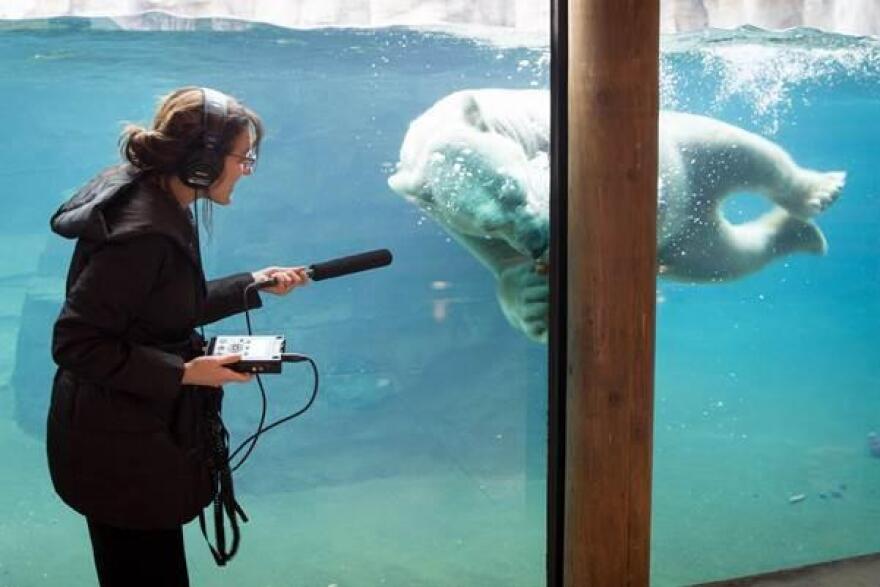Have you ever hung out with a stranger without talking for two minutes straight? And I’m not talking “two minutes” that are actually just 30 seconds that felt longer. I’m talking standing or sitting straight-backed, with no words exchanged. Just staring deeply into a person’s eyes in total silence.
Well, here at KCUR, our reporters do that a lot.
Now why would we subject ourselves to this strange act day in and day out? Because, dear reader, “natural sound” is crucial to helping us make our audio work shine.
When we put together a story at KCUR, it’s usually got three main elements: voiceover from the reporter, sound bites or "cuts" from people we’ve interviewed and natural sound. The first two are fairly self-explanatory, but natural sound is where things get more complicated — and where the radio magic happens.
“Nat,” as we in the business call it, is any sound that we gather on a scene. That could be anything from a crowd cheering to people going down zip lines. And, yes, even a silent room counts as nat sound (we call that "room tone").

See, we record our voice tracks with high-quality condenser microphones in studios filled with foam baffling. That means our voice tracks are incredibly crisp and rich, but have little background noise. But when we’re in the field, background noise is everywhere. Even in a room that seems pretty quiet, you might have small details like the air conditioner or computer whirring softly. Or a fish tank dribbling water from a filter.
So to fill in the gap between our dulcet tones and the subjects of our stories, we use that natural sound and room tone. To give an example, here are two clips that I pulled from a story I did last year. The first is taken from the final version of the story, with nat sound and other sounds mixed in.
The second has all the background sounds stripped away and only has my voice and Go Ape's Hannah Bowen.
See! You can hear the difference. The second clip is jarring without any sound behind it, particularly at the end of Bowen’s sentence. You might be able to get away with that in some cases — especially if the listener is driving on the highway or if they're listening with earbuds — but you lose the great scene setting that comes from having that extra layer of sound to illustrate what the experience is actually like.
So next time you hear a story from KCUR, keep your ears peeled (is that a phrase?) for all those little noises. You might just even get a deeper appreciation for a story and the craft that goes into it.
Cody Newill is the digital editor for KCUR 89.3. Follow him on Twitter @CodyNewill.


